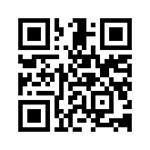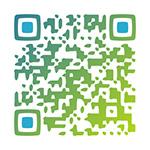What is a QR Code?
A QR Code is a two-dimensional square barcode which can store encoded data. Most of the time, the data is a link to a website (URL).
Introduction
Today, QR Codes can be seen on flyers, posters, magazines, and so on. You can easily spot these two-dimensional barcodes around you. QR Codes let you interact with the world using your smartphone.
Specifically, a QR Code extends the data at disposal on any physical object and creates a digital extension to marketing operations. This technology enables and speeds up the use of mobile web services: it is a very creative digital tool.

Interactive actions
When you scan a QR Code using your smartphone, you get immediate access to its content. The QR Code reader can then carry out an action, like opening your web browser to a specific URL. Other actions can be triggered, like storing a business card in your smartphone's contact list or connecting to a wireless network.
Get to know more about the different formats of QR Codes >History
QR Codes were created in 1994 by Denso Wave, a Japanese subsidiary of the Toyota Group. The use of this technology is now free. The QR Code is not the only two-dimensional barcode in the market; another example is the Data Matrix code.
QR Code is the most famous 2D barcode in the world. It has gained its success in Japan since the 2000s, where it is now a standard. In 2011, an average of 5 QR Codes were scanned daily by each Japanese, more than the average number of SMS sent!
In 2010, QR Codes started to expand in the USA, then in Europe, where they can notably be seen in advertisements.
In 2020, with the unfortunate help of Covid, the amount of QR codes created in Europe & America has risen by 200%. The amount of scans rose to 960%!

Customisations
QR Codes can be customised and thus make it possible for brands to incorporate their visual identity into their QR Codes.
When customising, some rules must be followed about the structure of QR Codes so that they remain readable. But customising remains a very effective way to promote your brand visual identity.
